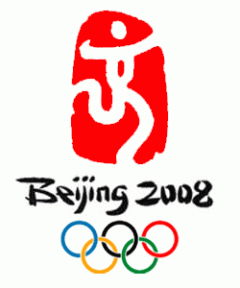Neuromarketing Firm Awards Olympic Gold to Visa, Home Depot
 Mega-sporting events are always mega-advertising events, and the cost to become a sponsor or advertiser is a huge commitment of corporate dollars. The inevitable question that arises after the event is, “Was it worth it?” NeuroFocus, a neuromarketing research company, has released their “Beijing Brand Study” which attempts to answer that question for the 2008 Summer Olympics. One of the firm’s key measurement variables is “Brand Perception Lift,” which they define as “the degree to which certain specific brand attributes experience a gain in consumers’ subconscious associations with the brand.”
Mega-sporting events are always mega-advertising events, and the cost to become a sponsor or advertiser is a huge commitment of corporate dollars. The inevitable question that arises after the event is, “Was it worth it?” NeuroFocus, a neuromarketing research company, has released their “Beijing Brand Study” which attempts to answer that question for the 2008 Summer Olympics. One of the firm’s key measurement variables is “Brand Perception Lift,” which they define as “the degree to which certain specific brand attributes experience a gain in consumers’ subconscious associations with the brand.”
Neurofocus evaluated four major sponsors for Brand Perception Lift, and came up with this ranking:
– Home Depot
– Budweiser
– McDonalds and Visa (basically tied)
The firm also measured what they call “Commercial Performance Lift” (defined as “how effective a spot is at capturing consumer’s attention, engaging them emotionally, and persuading them towards purchase.”) In that category, they came up with these somewhat different rankings:
– Visa
– Budweiser
– Home Depot
– McDonalds
Neurofocus also studied the ads of advertisers who weren’t actual sponsors, and found that the sponsors generally achieved better performance. Their summary recommendations were:
Overall Conclusion: Olympic sponsorship bestows significant, neurologically measurable advantages for companies? brands and their advertising.
However, commercial priming from advertising within Olympic content can provide significant brand lift for other advertisers who are not sponsors
The key to success is to avoid contextual dissonance. Advertising that features creative content that is relevant to the Olympics performs better than advertising that does not
NeuroFocus strongly recommends that for the future, both Olympic sponsors and other advertisers focus their advertising on Olympic imagery, language and other associations with the Games. At the neurological level, viewers pay more attention, become more emotionally engaged, and retain messages better when presented with Olympic-related advertising content
The press release is published here.
In its studies, NeuroFocus used a combination of high density EEG (electroencephalographic) sensor technology, pixel-level eye movement tracking, and GSR (galvanic skin response) measurements.
There’s something about big sporting events that can sometimes bring out neurohype, too – see Super Bowl Ads: GoDaddy Girl 1, Neuroscientists 0. With the sketchy data at hand, it’s hard to tell exactly what to make of these tests. Are they the first useful analysis of the ads associated with a big sporting event, or just another attempt to cash in on a mega-event’s status? While I’ll reserve judgment until I see more details, I like the emphasis NeuroFocus places on attempting to measure both the branding impact and influence on purchase intention. If accurate, this would indeed be the kind of actionable information advertisers are looking for.
